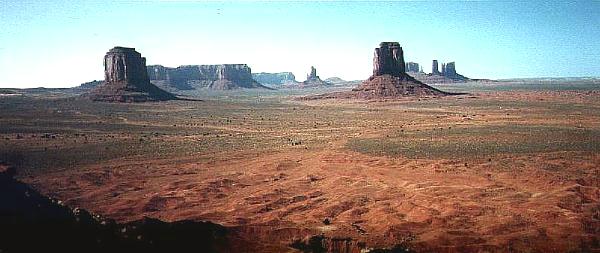
Models of succession (continued)
Lecture
graphics
- Westoby et al. (1989) proposed a state-and-transition model of
succession
- This model acknowledges that successional pathways can be
very complex ... e.g., within a single soil type in a local
area:
- Succession may lead to convergence at a single
community
- Alternatively, succession may produce divergence
- Multiple climaxes; no climax (cyclic succession) are
examples of non-equilibrium communities
- Tilman's (1990) "trade-offs" approach grew out of his resource-
ratio hypothesis of competition
- Tilman recognized 4 constraints to plant establishment and
growth:
- colonization (incl. many of Pickett et al.'s
constraints)
- availability of limiting soil resources
- availability of light
- sources of death (e.g., herbivores, pathogens)
- Using his data from Cedar Creek Natural History Area
(Minnesota), Tilman concluded that a 3-way tradeoff between
colonization, nutrient competition, and light competition
"drives" old-field succession there
- Tilman systematically eliminated other alternative
hypotheses via experimentation
- colonization and competitive "strength" for N determine
successional pathway for grasses
- transition from grassland to oak woodland "seems" best
explained by the nutrient:light ratio hypothesis
- Tilman's model reflects modern consensus that succession:
- is tightly linked w/ interactions between plants
- is complex, and therefore
cannot be described w/ one model for all situations
and locations:
- "Other plant communities will have other
constraints, and other successions will be
explained by other processes."
- Modern definition: succession involves recruitment of a suite
of
species which is different from (or at a
different rate than) mortality of a different
set of species--death of some spp., w/
replacement into the community by other
spp. --> changes in spp. composition which we
call succession
- Factors affecting rate and direction of succession
- Type of disturbance
- Intensity of disturbance
- Frequency of disturbance
- Scale of disturbance
- Community structure at time of disturbance (affects soil
development, seed bank, vegetative regeneration)
- McIntosh's (1980) article on the history of succession research
contains several insightful statements about succession and
science:
- "The search for clarity if not unity in succession has
daunted ecologists from the beginning."
- He cites Frank Egler as saying "ecology may not only be more
complicated that we think, it may be more complicated than
we can think."
- He cites Frank Golley (who was editing a volume trying to
provide an overview of succession) with: "A simple
mechanistic explanation of succession is not possible."
- Nonetheless, McIntosh encourages what he calls "the search
for satisfying regularity and simplicity ... traditional in
science, and [indicates] there is no reason to forgo that
search."
Previous
lectureNext lecture
